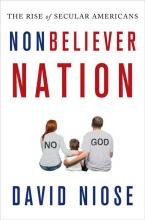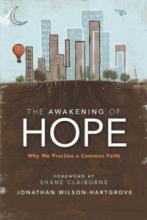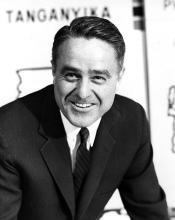Books

What’s the first thing you think of when you think poetry readings by a Poet Laureate and a Pullitzer Prize winner? Well, whatever it is, I’m sure you weren’t thinking dogs.
Nonetheless, pet dogs were brought up more than anything else during poetry readings by Billy Collins and Mary Oliver at the Strathmore in Bethesda, Md. on Sunday. They managed to bring up their dogs in a beautifully poetic way, of course.
But perhaps the most important take away from the evening came from Oliver during a question and answer time after the readings. She said something like this: “Pay attention. Be astonished. And tell about it. We’re soaked in distractions. The world didn’t have to be beautiful. We can and should think about that beauty and be grateful.”
Those are words I have tried to live by for the last year.
Both poets demonstrated that attention in their work — even in poems about dogs.

Among my must reads are the Sunday New York Times Book Review and other book reviews I come across in various media outlets. There are too many books being published that I would love to read, but just don’t have the time. So, I rely on reading book reviews as one way of keeping in touch with what’s being written.
Here are my picks from this week’s books.

An extended interview on biblical womanhood with Rachel Held Evans.

Among my must reads are the Sunday New York Times Book Review and other book reviews I come across in various media outlets. There are too many books being published that I would love to read, but just don’t have the time. So, I rely on reading book reviews as one way of keeping in touch with what’s being written.
Here are my picks of this week’s books.
EVEN IN AN age of ever-faster news cycles and shorter word counts, some journalists still find ways to dig deep into research and reporting to bring history to life and lift up voices that might otherwise be unheard. Here is an eclectic mix of nonfiction works on issues and people that matter.
Can those who commit violent crimes ever truly be rehabilitated? What happens to them once they’re out of prison? In Life After Murder: Five Men in Search of Redemption (PublicAffairs, 2012), Nancy Mullane follows her subjects from prison to welcome-home parties and beyond. While never minimizing the crimes her subjects have committed, she portrays their full, complicated humanity. Moving insights about the ongoing spiritual, emotional, and practical work of accepting responsibility for great wrongs and rebuilding a life after prison are framed by reporting on the convoluted, expensive prison and parole policies of California.
You might not expect gripping drama from a writer specializing in U.S. Supreme Court history, but that’s what Gilbert King’s Devil in the Grove: Thurgood Marshall, the Groveland Boys, and the Dawn of a New America (Harper, 2012) delivers. Long before he became a Supreme Court Justice, Thurgood Marshall was an NAACP lawyer who risked his life travelling to the Jim Crow South to defend African Americans accused of capital crimes. Devil in the Grove describes his efforts to save a black citrus picker from the electric chair in a Florida county where the Klan and law enforcement were brutally intertwined—and brings alive an era of domestic terrorism against people of color in the not-distant-enough past.
TECHNICALLY, the Tucson Unified School District did not ban any books after the Dec. 27, 2011, state court ruling that upheld the Arizona Education Department’s order finding the Mexican American Studies program illegal. But in January, the school district removed from classrooms seven books it said were referenced in the ruling and put them into remote storage. The district, according to Roque Planas of Fox News Latino, also “implemented a series of restrictions ranging from outright prohibition of some books from classrooms, to new approval requirements for supplemental texts, and vague instructions regarding how texts may be taught.”
Former Mexican American Studies teachers have been instructed to not use their former curricula or instruct students to apply perspectives dealing with race, ethnicity, or Mexican American history. So, for example, Shakespeare’s The Tempest can still be taught—but former Mexican American Studies instructors have been advised to avoid discussion of oppression or race (which have long been taught as themes of the play, even in predominantly white classrooms many miles removed from Tucson).

Author’s Note: When Arizona House Bill 2281 was used to dismantle the Mexican American Studies program in Tucson public high schools earlier this year, books used in the courses were removed from classrooms—in at least one school as students watched. Most of the titles, but not all, were by Latino writers.
Instead of swallowing their dismay, several students documented what they witnessed through social media. That’s how members of the Houston-based writers’ collective Nuestra Palabra: Latino Writers Having Their Say heard about what happened in Tucson. Incensed by the stifling of knowledge, they organized the Librotraficante (literally, “book traffickers”) book caravan. Their goal was to “smuggle” the “contraband” books back into Tucson, and bring attention to what critics contend is a troubling combination of anti-intellectualism and the state’s anti-immigration stance enacted earlier.
Nuestra Palabra members worked with partner organizations along the caravan route to hold press conferences and celebrate Latino arts and culture at several Librotraficante book bashes. In addition to the public events, the five-day journey stopped in six cities, seeding Librotraficante underground libraries along the way. This is a reflection on riding the Librotraficante caravan, which took place in mid-March.
SEEDS. My parents were farm laborers for part of their young adult lives. They did that body-leeching work in the hot Texas sun, picking and hauling cantaloupe, watermelon, onions, and anything else that required a human hand.
My life has been very different from theirs. I make a living working at a desk. But I keep an image near my computer: It’s a black-and-white photo of farm laborers working a field. Bent at the waist, their arms hang from their torsos, grazing the ground like roots recently pulled from the earth. Whenever I start whining—about how hard my chair is, or that my computer is too slow, or that my agent doesn’t love me as much as his other clients—I look at this photo. I work, but the kind of work shown in the photo is grinding and thankless.
Because the workers’ faces are hidden in the shadow of broad-brimmed hats, I feel that I know even less about them. I don’t know their story. What I do know is that the spinach, tomatoes, and onions I enjoy on a chilled plate are because of these faceless, distant people. And yet, I know I’m not that far removed from them. Besides our shared heritage, it’s hard not to feel a sort of kinship to someone who makes it possible for food to appear on your plate.
Since the establishment of The Council for Biblical Manhood and Womanhood in 1987 and J.I. Packer’s 1991 article “Let’s Stop Making Women Presbyters” in Christianity Today, there’s been a resurgence of traditionalist theology among some American churches. Instead of advocating “male headship,” they now promote “complementarianism.” Instead of portraying women as intrinsically “serving, subordinate, and supportive,” they now advocate “biblical womanhood.” But it’s the same patriarchal heresy, just with new language.
Rachel Held Evans, a Tennessee-based evangelical Christian raised in conservative Christian churches, decided to turn the tables. She vowed to take all of the Bible’s instructions for women as literally as possible for a year. A Year of Biblical Womanhood: How a Liberated Woman Found Herself Sitting on Her Roof, Covering Her Head, and Calling Her Husband Master is the often-hilarious, engaging, well-researched, deadly serious result. (You can read all about her adventures at rachelheldevans.com). Former Sojourners editorial assistant Betsy Shirley, a student at Yale Divinity School, interviewed Evans in August 2012.

Among my must reads are the Sunday New York Times Book Review and other book reviews I come across in various media outlets. There are too many books being published that I would love to read, but just don’t have the time. So, I rely on reading book reviews as one way of keeping in touch with what’s being written.
Here is my pick of this week’s books.
“On a Farther Shore: The Life and Legacy of Rachel Carson”
By William Souder, Reviewed by Elizabeth Royte
"On the bookshelves of many a contemporary environmental journalist looms at least one canonical text she’s hesitant to read. For this reviewer, it was Rachel Carson’s “Silent Spring,” among the gloomiest books ever written, an unrelenting catalog of crimes committed by man against nature. But after reading William Souder’s engrossing new biography of Carson, “On a Farther Shore,” I returned to the book and discovered its central message to be — depressingly — timeless. Substitute organic pesticides and herbicides with the endocrine-disrupting compounds found in everyday household items or the creep of chemicals used in hydrofracking, and you may experience the same hair-prickling alarm felt by Carson’s readers 50 years ago."

Among my must reads are the Sunday New York Times Book Review and other book reviews I come across in various media outlets. There are too many books being published that I would love to read, but just don’t have the time. So, I rely on reading book reviews as one way of keeping in touch with what’s being written.
Here are my picks of this week’s books.

They call her the "Flying Squirrel" — Gabby Douglas, the pint-sized fire-cracker who won two gold medals (and the hearts of millions) at the 2012 Summer Olympics.
Gabby can flip, tumble, vault, balance, swing, totally stick the landing, throw out the first ball at a Dodgers game, charm Jay Leno and Howard Stern (try that, Michael Phelps!), and high-five the First Lady — all the while exuding confidence, good humor and the greatest of ease through her cajillion-watt smile.
So, what's next for the 16-year-old wonderkid?
A tell-all book... about her Christian faith.
Gabby is working on her first book — a memoir titled Grace, Gold, and Glory: My Leap of Faith — which is expected to be published at the end of the year, according to an announcement made today by the Christian publishing house, Zondervan.

[Editor's Note: David Niose is president of the American Humanist Association and vice president of the Secular Coalition for America, a group that lobbies on behalf of nontheist and secular Americans. In his new book, “Nonbeliever Nation: The Rise of Secular Americans,” he charts the development and growth of the religious right and what he sees as the increasingly organized response from Americans who are committed to the separation of church and state. Some answers have been edited for length and clarity.]
Q: You write about the 1912 presidential election as one in which all four candidates were sympathetic to evolution, science and religious skepticism. Today, a presidential candidate favors evolution at his or her peril. What’s changed?
A: What has changed is the environment of politics, particularly the level of political discourse. Thanks to the rise of the religious right, many candidates today actually emphasize their anti-intellectualism as a selling point to voters. Conservative Christians have always been part of the voter pool, of course, but only in recent decades have they been organizing and flexing their muscle as a voting bloc. Many candidates get mileage by pandering to conservative religion, by openly rejecting science and emphasizing their biblical literalist views.
PASTOR T.C. RYAN spent 40 years haunted by the shadow life of compulsive sexual behavior. Despite the challenges, Ryan never gave up hope of trying to reach the fullest recovery. He tells his story in Ashamed No More.
Compulsive sexual behavior put Tiger Woods into the headlines and made him an object of ridicule, as it has for so many others. In telling his own story, Ryan tears back the curtain to reveal the fuller story of painful realities, challenges, and hopes for those faced with the daunting task of recovery from similar compulsions.
“Those who are not addicted to sex understandably assume that the addict at least experiences enjoyment from the sexual activity, but this is not the case,” Ryan writes.
As Ryan describes it, he was living a divided life. In one arena he was a capable and gifted pastor. In the other he was plagued by shame, self-loathing, and an inability to stop destructive behavior. His extensive explanation of the cycle of addiction, the lies he had come to believe from childhood, the role that therapy and other supportive measures played in his recovery, and his hopes for how the church can become the ultimate 12-step program make every chapter of this book essential.
Across Sacred Fences
More than 50 contributors offer moving, insightful personal essays about interfaith experiences in My Neighbor’s Faith: Stories of Interreligious Encounter, Growth, and Transformation. Edited by Jennifer Howe Peace, Or N. Rose, and Gregory Mobley. Orbis Books
Women Rising
On Oct. 1 and 2, PBS will air the two-part special Half the Sky. Inspired by Nicholas Kristof and Sheryl WuDunn’s best-selling book of the same name, the film follows the authors through 10 countries to meet people challenging extreme gender inequality and the poverty, trafficking, and violence it perpetuates. pbs.org/independentlens

Among my must reads are the Sunday New York Times Book Review and other book reviews I come across in various media outlets. There are too many books being published that I would love to read, but just don’t have the time. So, I rely on reading book reviews as one way of keeping in touch with what’s being written.
Here is my pick of this week’s books.

Among my must reads are the Sunday New York Times Book Review and other book reviews I come across in various media outlets. There are too many books being published that I would love to read, but just don’t have the time. So, I rely on reading book reviews as one way of keeping in touch with what’s being written.
Here are my picks of this week’s books.

Jonathan Wilson-Hartgrove is a modern-day sage. A leader in the New Monastic movement, Hartgrove offers New Monastics and the church at-large profound lessons revealed through the practices of catechism — the spiritual disciplines of Christian faith.
Tempted by the powers of isolation, consumerism, pride, and violence this generation is drawn to the calls to community and simple living for reasons it hardly knows. Wilson-Hartgrove explains the “why."
Through the stories of well-established intentional Christian communities, Wilson-Hartgrove offers windows into the catechisms of the Christian faith. Communion and the Eucharist, fasting, integrity, community, non-violence, and public witness each serve as windows into much deeper philosophical and theological discussions.

Among my must reads are the Sunday New York Times Book Review and other book reviews I come across in various media outlets. There are too many books being published that I would love to read, but just don’t have the time. So, I rely on reading book reviews as one way of keeping in touch with what’s being written.
Here is my pick of this week’s books.

Among my must reads are the Sunday New York Times Book Review and other book reviews I come across in various media outlets. There are too many books being published that I would love to read, but just don’t have the time. So, I rely on reading book reviews as one way of keeping in touch with what’s being written.
Here are my picks in this week’s books of interest.

In June my husband, who gets lots of review copies unbidden, asked me if I wanted to read Mark Shriver's memoir about his father, Sargent Shriver, who passed away in 2011 at age 95.
"Since you're a fan of all things Kennedy," he said, "I thought you might want to see it."
I didn't.
True, a high point in my adolescent life was standing in back of St. Matthew's Cathedral one December morning in 1963 waiting for mass to begin when suddenly a very tall, very disheveled, very pregnant Eunice Kennedy Shriver pushed past me, wearing smudged red lipstick and a full-length fur coat. But sons are not necessarily good biographers, and anyway, I had a stack of mysteries awaiting my attention.
But then in July, a Facebook friend pointed me to Reeve Lindbergh's review of A Good Man in the Washington Post, suggesting that this was a book I might want to read. Lindbergh — herself the daughter of two famous parents, Charles and Anne Morrow Lindbergh — called it "a moving and thoughtful book." Maybe I'll read this after all, I said to myself. And then a week or two later, my friend Estelle sent me a copy of the book as an early birthday present, telling me she thought I'd connect with it on many levels.
I must be supposed to read this one, I thought.